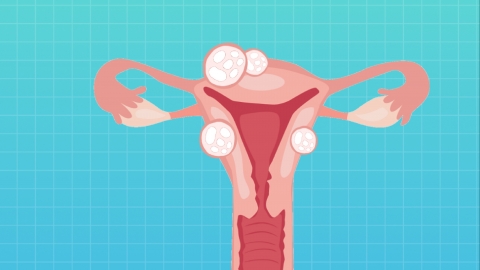How are uterine fibroids formed?
Generally, the formation of uterine fibroids may be caused by factors such as genetic influences, hormonal imbalances, aging, endometritis, and adenomyosis. It is recommended to seek timely medical consultation, identify the underlying cause, and undergo symptomatic treatment under a doctor's guidance. Detailed analysis is as follows:

1. Genetic Factors: Individuals with a family history of uterine fibroids may inherit susceptibility genes, which increase the sensitivity of uterine smooth muscle to hormones, making it prone to abnormal proliferation and fibroid formation. This often occurs in adolescent or young women. Those with a family history should start regular gynecological ultrasound examinations earlier—at least once or twice a year—to ensure early detection.
2. Hormonal Imbalance: Excessive secretion of estrogen and progesterone in women of reproductive age can stimulate abnormal proliferation of uterine smooth muscle, gradually leading to fibroid formation. This is commonly seen in women aged 20–40 years. Maintaining a regular lifestyle, avoiding staying up late, reducing intake of estrogen-containing supplements, and consuming more soy products, vegetables, and other foods rich in dietary fiber can help regulate hormone balance and reduce the risk of fibroid development.
3. Aging: As women age, ovarian function changes and hormonal regulation capacity declines, making uterine smooth muscle more prone to abnormal proliferation and increasing the likelihood of fibroid formation. This is commonly observed in perimenopausal women. Regular moderate exercise, such as brisk walking or yoga, can enhance metabolic capacity and help maintain hormonal stability.
4. Endometritis: Long-term bacterial infection and inflammation of the endometrium can stimulate uterine smooth muscle proliferation, potentially inducing fibroids, accompanied by menstrual irregularities and lower abdominal pain. Patients should follow medical advice to use medications such as cefuroxime axetil tablets, metronidazole tablets, and levofloxacin hydrochloride capsules to control inflammation. Reducing inflammation can help eliminate triggers for fibroid development.
5. Adenomyosis: The invasion of endometrial tissue into the uterine muscle layer can lead to disordered proliferation of muscle tissue, possibly accompanied by fibroid formation, manifesting as worsening dysmenorrhea and increased menstrual flow. For mild symptoms, medications such as gestrinone capsules, danazol capsules, and ibuprofen sustained-release capsules may be used under medical guidance to relieve symptoms. If fibroids are small, laparoscopic lesion resection can be performed to remove diseased tissue and reduce stimulation to the uterine smooth muscle.
In daily life, maintaining emotional stability, avoiding long-term anxiety and depression, and reducing psychological stress can help minimize the impact on hormone levels. Practicing good menstrual hygiene and avoiding strenuous exercise during menstruation through effective lifestyle management can lower the risk of developing and progressing uterine fibroids.




